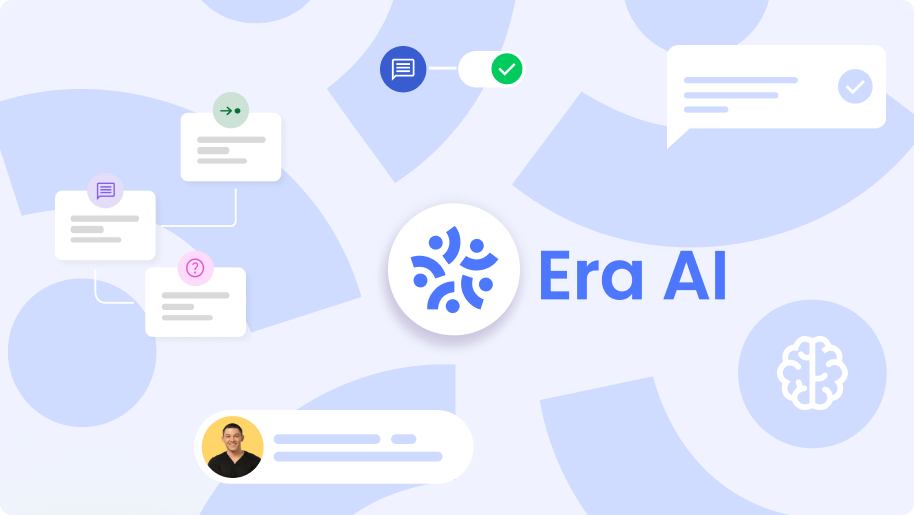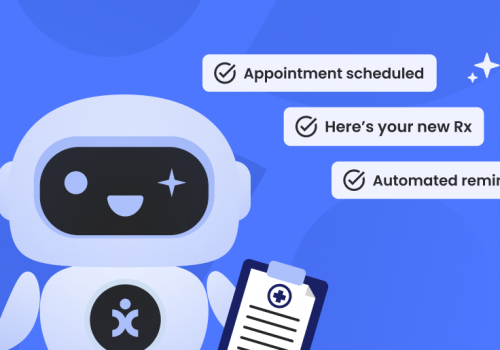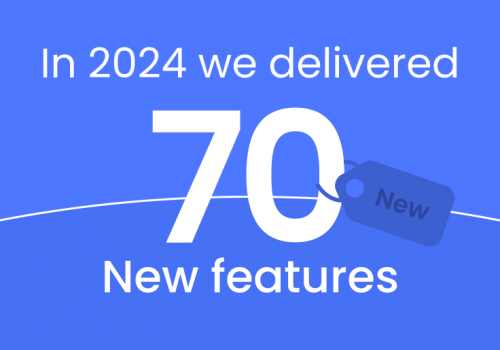Omnichannel Contact Center. The contact centers of the past could be defined as ‘tactical’ or ‘reactive’ solutions. Their function was to allow customers to communicate with a company if an issue arose, but they weren’t built to draw a customer in and leave them feeling satisfied with their overall experience. It’s not that companies didn’t understand that happier customers lead to more conversions, but that the technology wasn’t there to allow for a seamless experience where a customer’s needs can be easily met.
Contact centers today are moving in a different direction. They are now viewed as a strategic customer engagement tool where stronger relationships can be fostered with customers. The rise of data collection, analysis, and data science have played a significant role in this shift. With access to more data, businesses can now unlock actionable insights hidden within that data, leading to better solutions for both customers and businesses. Usable data has also led to an explosion in artificial intelligence solutions which has rapidly elevated automation technology to something highly effective, rather than something awkward and annoying.
Multichannel contact centers have been a prominent part of the contact center landscape for some time, and while they do provide substantial benefits over having a single point of contact, they are lacking in some areas. This is why some tech-savvy organizations are opting to move to an omnichannel approach where customers’ needs can be addressed in one place. An Omnichannel approach is often compared to Netflix, where viewers can get all their favorite content in one place, regardless of what their preferences are.
Preferences in entertainment content and communication styles may not seem all that comparable on the surface, but they are. The key to creating satisfied customers is ensuring they have a smooth experience, and one way to do this is to bake their preferences into your communication technology. We all have communication preferences. Some of us prefer to talk on the phone, some of us prefer email, and some of us prefer live messaging. Whatever the preference is, companies should make sure that those preferences are catered for if they want to impress those customers and drive new sales or improve customer retention. Omnichannel contact centers take this to the next level by allowing for a more dynamic type of communication if needed but also making the process even smoother for customers because they don’t have to manage several communications streams across different mediums.
Efficiency is at the heart of CommBox’s approach because an inefficient solution forces companies to be constantly fire fighting just to get by. An efficient solution fulfills business goals and awards the company with more time to make new goals, advancing their business to the next level.
What is an autonomous omnichannel contact center?
An omnichannel contact center is a customer service strategy focused on allowing customers to contact companies using their preferred method of communication. These contact centers are designed to allow a seamless experience for the customer, no matter what their communication method of choice is. An autonomous omnichannel contact center takes this one step further by building automation into the solution resulting in a smoother experience for both the customer and the company.
The focus of omnichannel contact centers has evolved over time. In the past, the omnichannel approach was focused on integrating voice and video interaction in their solutions, but the focus has now shifted to integrating social media, live chat, and messaging services. Many customers, and especially younger customers, display a clear preference for messaging based communication over a call or email. There are many reasons for this but one of the key reasons is ease of use. One aspect of ease-of-use that isn’t often touched on is how much disruption a communication channel will cause to your daily life. Messaging channels cause very little disruption because customers can use them alongside their other activities.
We can all probably empathize with being at work when we get a notification or email from a company that we want to address immediately. Maybe you’ve ordered something mistakenly, or your subscription for a much-loved service is changing in a way you don’t think meets your needs. In the past, you may only have one option – to stop what you’re doing and call them. This means removing yourself from your work, from your workout at the gym, tearing your eyes away from your child’s sports game, and so on. It’s not an ideal situation because it demands your full attention for the time it takes to resolve the issue and because we are so often in the dark about how long it will take to resolve, as customers we are reluctant to give away our time to resolve the issue. Messaging customer service solutions solve this issue because you can split your attention between the chat and your other activities without having to put your life on hold. Put simply, our modern lives are extremely busy and this means that a modern solution to customer service is needed. This is what we strive to provide at CommBox, an intuitive autonomous omnichannel customer service approach that is fit for customers and businesses in a modern and rapidly changing world.
Why Are Autonomous Omnichannel Contact Centers Necessary in the Digital Age?
Customers Prefer An Easy Experience
This may not seem very surprising, but there’s more to the picture here. It turns out that people prefer ‘easy’ experiences to ‘personalized’ ones, despite organizations thinking it’s the other way around.
That’s not to say personalized experiences shouldn’t be a priority, but that an easy route to communication and resolution needs to be a top priority for businesses. Time is a valuable commodity in the digital age and nowhere is that truer than interacting with customer service platforms. It’s no secret that often when a customer is looking to talk to a customer service agent, it’s because they have an issue that is causing them some frustration. If the customer finds it difficult to get in contact with the business because they have been passed from person to person and have found themselves in an endless loop, their frustration will multiply. The same is true if the customer can’t find the right channel of communication for them, or how they can best get a company’s attention. An Omnichannel approach strips away any frustrations associated with getting the conversation underway.
Reducing Agent Effort and Improving Morale
Call centers have long been plagued with high turnover rates. In 2018, the average annual turnover rate for US call centers was 30-45%, more than double that of all other occupations. This alarming reality won’t be fixed with any one approach, but that doesn’t mean we shouldn’t make meaningful steps to address the situation.
Key contributors to this issue are low job satisfaction, lack of recognition, and excessive pressure or stress. These factors add to overall low morale which drives people away from the job. An omnichannel approach can relieve these factors in a number of ways. The main one being an improved customer experience. If customers can easily contact a company through one channel and as a result have their needs met efficiently, they will be happier. Happier customers are less aggressive towards companies. An efficient customer management platform also alleviates stress because agents are better able to attend to customers.
Cost-Effective and Efficient
Managing many siloed communication platforms can lead to important communications being missed and leaving many customers frustrated. Adding to this, having separate communication technologies means managing different software suites, technical support teams, and several third party companies. This is both inefficient and has the potential to be expensive.
Improved Analytics
Data is a hot topic right now and has even been dubbed “the new oil” due to its role in advancing AI and automation. AI and automation are playing a huge role in every industry and becoming the new blueprint for how to improve efficiency. An Omnichannel approach means businesses can delve deep into their customer service data because all the data is in one place. The different channels of communication aren’t just wrapped up under an aesthetically pleasing software shell, they are connected, and their data is connected. Improved analytics allows businesses to identify patterns in customer behavior and use these patterns to improve their service.
See How CommBox Can Help You Make a Smooth Transition Towards an Autonomous Omnichannel Contact Center
Managing Your Call Center From One Platform: Multichannel vs Omnichannel
Multi-channel contact centers offer various ways in which a customer can contact the business, for example through SMS, phone, IVR, online messaging, or email. However, in a multi-channel approach, these channels are siloed and have their own data depositories. This means that if a customer interacts with more than one channel, they will have to reiterate their information to get to the communication flowing again. It also means that the business has an incomplete picture of who that customer is and how to best meet their needs.
From an operational perspective, a multichannel approach is also less efficient. Agents will need to be trained on every application that deals with a specific communication channel, which drives up costs and reduces the time they are spending with customers. When you also factor in high turnover rates, it can get very expensive. Having multiple applications also increases the organization’s vulnerability to technical issues and downtime.
By contrast, an omnichannel approach unifies data and accessibility across all channels of communication. Data and reporting are the lifeblood of an efficient call center, and this requires an efficient approach.
CommBox utilizes AI and machine learning to deliver highly efficient, scalable, and flexible solutions that are better for customers, clients, and businesses. We remove the inefficient frustrations associated with a multi-channel approach by building high-quality automation into our Omni-channel applications.
Our automation software is designed to maximize and streamline an agents workload by routing customers to the best agents depending on their needs. This ensures that customers have a great experience, but also that agents are developing their expertise in a particular area, and feel satisfied that they helped the customer. We already discussed how a lack of recognition and job satisfaction can lead to high turnover rates, and this is one of the ways a CommBox approach can help solve this issue. Agents perform better and have higher job satisfaction rates when they can make customers happy, rather than having to pass the customer on because they are ill-equipped in that particular area.
All in All…
With automation rapidly taking over all industries, companies who fail to adapt to this trend risk being left behind and losing customers along the way. At CommBox, we are focused on making sure this doesn’t happen. We provide businesses with an outstanding opportunity to connect with their customers through an intelligent and adaptive autonomous omnichannel platform. Our Omnichannel approach allows businesses to manage all of their customer communications under one platform that has efficiency at its very core. We have placed ourselves at the epicenter of this emerging industry trend away from multichannel and traditional contact centers, towards an Omnichannel approach that will soon come to dominate the digital age. Join us and take your business to the next level.




















